20 Dark Academia Horror + Thriller Movies
This list catalogs the 20 best dark academia horror and thriller films, and is made for those with a “morbid longing for the picturesque.”
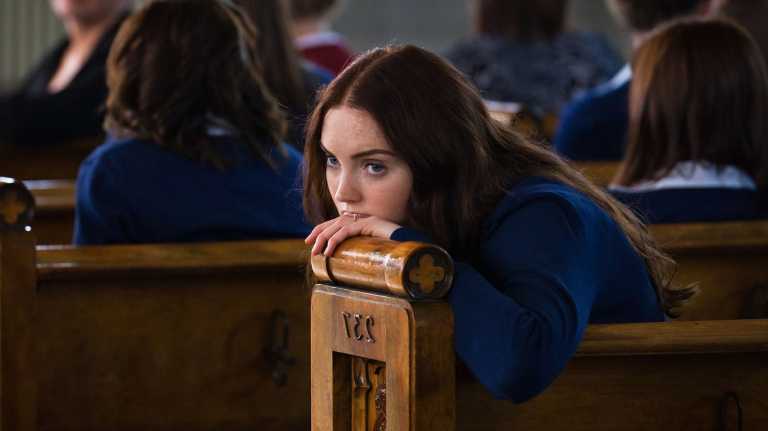
A scholastic setting, architectural grandeur, tweed, coffee, antique furnishings, an oppressive mood, an eerie atmosphere, brooding, classic literature, dusty and leather bound books. All of these things come to mind when thinking about dark academia. So do obsession, dizzying friendships, twisted journeys of self-discovery, mystery, desire, thirst for knowledge, morality, and murder. The subgenre was greatly popularized in literature with books like Donna Tartt’s The Secret History (1992) and M.L. Rio’s If We Were Villains (2017), although its roots can be traced as far back as Mary Shelley’s Frankenstein (1818).
In cinema, the niche grew with movies like Maurice (1987), Dead Poets Society (1989), and Mona Lisa Smile (2003). Dark academia is also prevalent in television—shows like The Magicians, Wednesday, and A Discovery of Witches. When it comes to discussing horror, the subgenre is often overlooked in favor of other more popular ones, but there’s plenty of thrilling and terrifying dark academia to be found.
The list below includes the 20 best dark academia horror and thriller movies, all of which encapsulate the aesthetic and explore the dark side of human nature.
Even the Wind is Afraid (1968)

Written and directed by the original king of Mexican horror, Carlos Enrique Taboada, Even the Wind is Afraid is one of the greatest Latin American works in the genre. The gothic tale focuses on a repressive all-girls boarding school. After a group of students sneak into a restricted building, the academy’s tower, their cruel headmistress, Miss Bernarda (Marga López), who they have dubbed “The Witch,” punishes them by forcing them to stay behind while everyone else leaves for Spring Break. The girls find themselves haunted by the restless spirit of a long dead student, who seems to be after the protagonist Claudia (Alicia Bonet). The film will scratch your dark academia itch with atmosphere, wind, darkness, and lavish sets to spare. As a whole, it serves as an allegory for the youth rebellion in 1960s Mexico, known as El Movimiento Estudiantil (The Student Movement), which the authoritarian government acted against in October of 1968 in a horrible, lethal attack now remembered as the Tlatelolco massacre.
The House That Screamed (1969)

This obscure gem is the first English language production from Spain—and one of the earliest originators of the slasher, influencing many future horror films. The stylish gothic horror is set in France in the late 19th century. Bursting with violence and repressed sexuality, it follows the inner workings of a secluded boarding school for “troubled” and “tainted” girls, helmed by Madame Fourneau (Lilli Palmer), whose only soft spot is reserved for her sheltered, strange teenage son, Louis (John Moulder-Brown).
The stern, often sadistic headmistress runs the school with the aid of a student, Irene Toupan (Mary Maude), who helps her dole out the whippings, carries every key, and governs the school with her gang of mean girls. As new student Teresa Gravin (Cristina Galbó) becomes accustomed to the rules and hierarchies within the foreboding walls, she learns that several students have recently mysteriously disappeared. The House That Screamed is an intimate, unsettling movie driven by atmosphere, mood, and suspense. It would make an excellent double feature with Even the Wind Is Afraid.
The Picnic at Hanging Rock (1975)
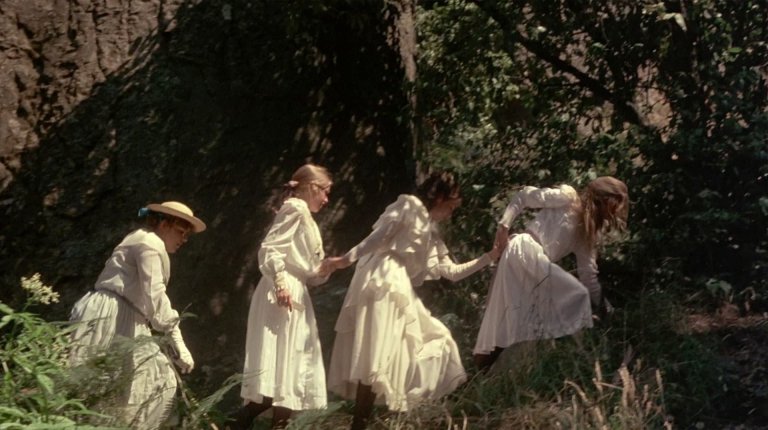
Peter Weir’s timeless masterpiece is an excellent choice for satiating your dark academia cravings. The mystic film, which is based on Joan Lindsay’s novel of the same name, is a gorgeous meditation on nature, repression, and sexuality. The story also explores themes of colonialism and the erasure of Indigenous culture and history. It focuses on Appleyard College, a girls’ private school in the Australian wilderness in 1900. During a St. Valentine’s day outing to the scenic and ancient Hanging Rock, a few girls inexplicably vanish, along with one of their teachers, after venturing off to explore the volcanic formation’s upper slopes and maze-like tunnels. The horror in The Picnic at Hanging Rock doesn’t lie in what you see, but in what isn’t shown. To watch the movie is a dreamy, eerie experience—one whose mysteries haunt the viewer.
Suspiria (1977)

Dario Argento’s classic must have been greatly influenced by the seminal Spanish horror mentioned above, The House That Screamed. There are numerous parallels between the two—a fairytale-like quality, slow-building suspense, color as a narrative element, setting, and a doe-eyed protagonist. The cult horror follows an American ballet student who arrives at the prestigious Tanz Akademie in Germany and discovers that it’s a front for a coven of witches. Suspiria challenges convention, refusing to be defined—it’s gothic, it’s supernatural, it revels in the occult, it deviates from and yet expands on the giallo formula. One aspect it rarely is but should be more recognized for is its dark academia elements and style. An exclusive academy dedicated to the liberal art of dance? A mysterious darkness? An overwhelming, eerie atmosphere? The exploration of arcane knowledge and occult practices? At first glance, the cult horror may not fit the traditional dark academia mold, but it definitely tracks.
Gothic (1986)
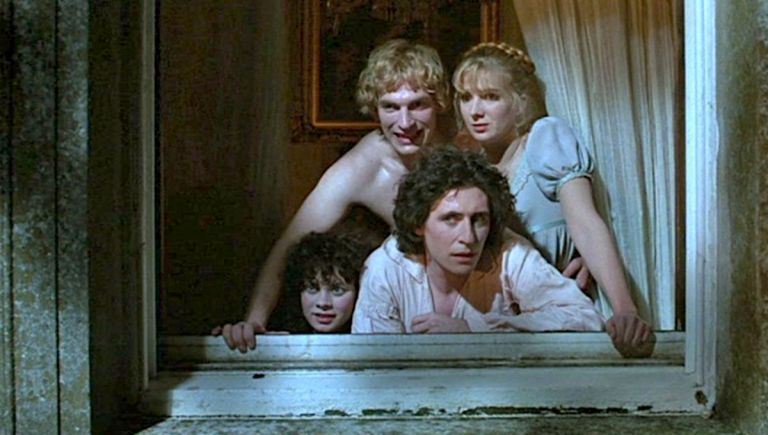
Director Ken Russell’s Gothic is loosely based on an actual visit writers Mary Shelley (then Mary Wollstonecraft Godwin) and Percy Shelley made to poet Lord Byron at Villa Diodati in Lake Geneva, Switzerland. Over the course of a vacation in June of 1816, the Shelleys, Byron, John Polidori, and Mary’s step sister Clair Clairmont were stuck inside for days due to bad weather. They consumed plenty of wine and laudanum (liquid opium) to pass the time. For entertainment, they read poetry and stories, including ghost tales from Fantasmagoriana, and later had a competition to create a story of their own. Polidori began his short story “The Vampyre,” the first modern vampire tale, which would later influence Bram Stoker’s Dracula. However, it’s Mary’s gothic sci-fi creation, Frankenstein, which would go on to revolutionize literature and pop culture, that this trip is most infamous for. Gothic fictionalizes one of these fabled nights, infusing itself with the supernatural, gothic, and hallucinatory. The film, which sees each character haunted by their own fears and personal desires, is heavy on ritual magic, paganism, and the occult.
Like Minds (2006)
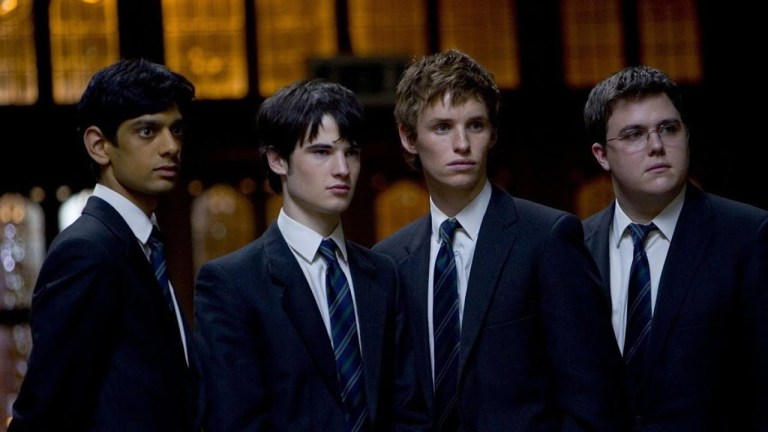
Like Minds is a mesmerizing psychological thriller that is beautifully shot to achieve a dark academia aesthetic. It focuses on two schoolboys at an English boarding school who have an unhealthy obsession with each other. One’s dangerous fixation on the Knights Templar leads them down an unhinged, deadly path. When new student Nigel Colbie (Tom Sturridge) discovers that he and Alex Forbes (Eddie Redmayne) are descendants of the secret society, he’s intent on the belief that they share a duty to carry out a murderous ritual and obtain incredible powers in the process.
From the beginning, the audience is privy to the fact that Nigel is dead. Sally Rowe (Toni Collete), a forensic psychologist, is tasked with interviewing Alex, who, based on circumstantial evidence, is the prime suspect. Their relationship and the events leading up to Nigel’s death are examined through a series of flashbacks. The movie uses Gestalt psychology and Templar lore as foundation for the plot. It’s an intriguing, mysterious work that reveals new details and theories with each rewatch.
Cracks (2009)

Although Sheila Kohler’s 1999 novel is more nuanced, its cinematic adaptation is still worth watching. The film is set in the 1930s at St. Mathilda’s, a British boarding school for girls on a fictional island off the coast, and centers around an exclusive clique of students who idolize their magnetic teacher, Miss G (Eva Green). The ringleader, Di Radfield (Juno Temple), is Miss G’s favorite and the star student of her diving class. That is upended when new Spanish student Fiamma Corona (María Valverde) arrives, who, unlike the other girls, is uninterested in Miss G’s approval, and the teacher takes an unmatched affection with her. The jealousy and disdain of her classmates fester into violence, as does Miss G’s special interest in her. Cracks is a dark story that explores obsession, power politics, loneliness, abuse, and the seductive charm of superficially charismatic people.
Kill Your Darlings (2013)

Kill Your Darlings is a thriller loosely based on the lives of famed original Beat Generation writers Allen Ginsberg, Jack Kerouac, William S. Burroughs, and Lucien Carr. Set at Columbia University in 1944, the film gives a dramatized account of their time experimenting with drugs, exploring new literary styles, dealing with academic rivalries, rebelling against the establishment, and becoming involved in a murder investigation. Although it’s been heavily criticized for its liberties with fabrications and historical inaccuracies, the movie is a must-watch for dark academia lovers. It has obsession, poetry, academic fervor, mahogany desks, intense friendships, leather bound books, and literary innovation. Danielle Radcliffe stars as Ginsberg, who harbors feelings for fellow schoolmate Carr (Dane DeHaan). His affections are rivaled by David Kammerer (Michael C. Hall), who’s later found dead. Jack Huston plays Kerouac and Ben Foster plays Burroughs.
Master (2022)

Written and directed by Mariama Diallo, Master follows the lives of two Black women at Ancaster, a prestigious New England college rich with history. Freshman Jasmine Moore (Zoe Renee) moves into room 302 in the Belleville House, a residence hall built where the gallows once stood, rumored to be cursed by Margaret Millet, a woman who was hanged for witchcraft in that very place. She learns that her room was once inhabited by Ancaster’s first Black student, Louisa Weeks, who was found hanging in her dorm in 1965. As she gets acclimated, she becomes increasingly obsessed with the tragic story and is terrorized with horrible attacks. But is it a haunting or is there something more sinister and hateful at play?
Professor Gail Bishop (Regina Hall) has just been appointed as the university’s first Black Master, a position she’s hopeful will bring about change. As she navigates academic politics and tries to protect Jasmine from an escalating series of terrifying incidents, her hopes are shattered. Master exposes the white supremacy that’s still living and thriving in America’s academic institutions, and sheds light on the covert racism of liberalism.
Saltburn (2023)
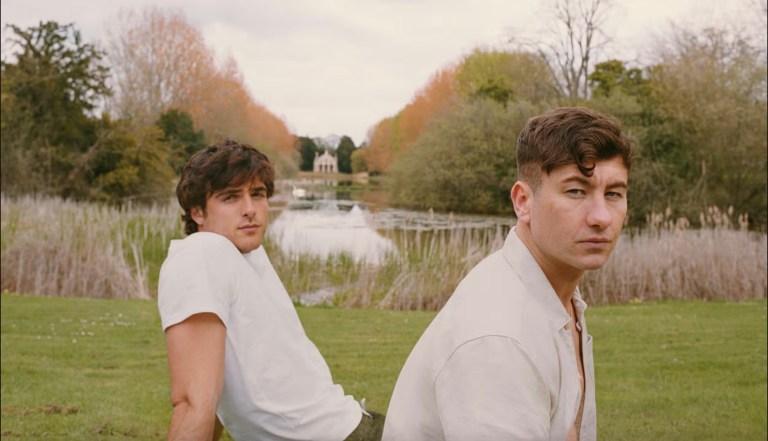
Saltburn is a stylish, often surreal, and alluringly wicked film that seduces the viewer with aesthetic and narrative. It has all the classic trappings of dark academia: lavish architecture, dark wood-paneled walls, books, moody interiors, queer-coded characters, morally gray figures, obsession and desire. The setting is 2006 at the beautiful and illustrious University of Oxford. Scholarship student Oliver Quick (Barry Keoghan) is a loner and not quite as “cool” as his fellow classmates. All that changes with an encounter with Felix Catton (Jacob Elordi), the most popular guy in his class. Felix develops a soft spot for him and takes him under his wing, welcoming him into his posh clique, and later inviting him to spend the summer at his family’s estate, where Oliver meets Elspeth (Rosamund Pike), the eccentric Catton matriarch. Interestingly enough, Elordi shared that he read the 1945 iconic dark academia novel by Evelyn Waugh, Brideshead Revisited, to prepare for his role.
More of the best dark academia horror and thriller films…
Frankenstein (1931) The legendary James Whale directed this adaptation of Mary Shelley’s gothic novel, a book considered to be one of the progenitors of dark academia. The film follows Dr. Henry Frankenstein (Colin Clive), who assembles body parts from the deceased and gives life to The Monster (Boris Karloff).
Compulsion (1959) A suspenseful thriller that focuses on two sociopathic students at the University of Chicago who commit a murder in a philosophical experiment to commit the perfect crime. The movie is based on the 1956 novel of the same name by Meyer Levin, which was a fictionalized account of the infamous case of Leopold and Loeb. For fans of Donna Tartt’s The Secret History, these two will give off major Henry and Richard vibes.
Flatliners (1990) Kiefer Sutherlands, Julia Roberts, and Kevin Bacon star in this sci-fi horror about a group of medical students who, in an attempt to discover what lies beyond death, take turns killing each other and bringing each other back from the dead.
The Covenant (2006) Sebastian Stan stars as a new student at a private New England boarding school where a coven of warlocks reside.
Dorian Gray (2009) A British dark fantasy based on Oscar Wilder’s classic novel, which is considered to have paved the way for dark academia. It tells the story of young Dorian Gray (Ben Barnes), who arrives in Victorian London, and soon gives his soul away in exchange for eternal youth. The movie’s dark themes reflect the dark academia genre.
Black Swan (2010) Darren Aronofsky’s psychological horror about ballerinas in rigorous training contains all the classic tropes and aesthetics of dark academia. Natalie Portman stars as Nina Sayers, a devoted ballerina in pursuit of the lead role in “Swan Lake.” She finds a rival in newcomer Lily (Mila Kunis) and quickly spirals.
The Moth Diaries (2011) Written and directed by Mary Harron, the movie is based on the 2002 novel of the same name by Rachel Klein. It follows Rebecca (Sarah Bolger), who becomes suspicious that Ernessa (Lily Cole), the new student at her boarding school, is a vampire. As the newcomer gets closer to her best friend Lucie (Sarah Gadon), she notices a change in her that makes her increasingly concerned. The film uses Carmilla, the classic gothic novella by Sheridan Le Fanu, as a foundation, and is often referenced in the film.
The Blackcoat’s Daughter (2015) Oz Perkins directed this stylish dark academia that heavily leans on the psychological and the occult. The movie is set at Bramford Academy, a private elite New York Catholic boarding school. It focuses on two students stranded at the school during winter break, where they experience a sinister presence. The film’s ending is one of the most haunting, ambiguous endings in the genre. Themes explored include isolation, fear of loneliness and abandonment, religious oppression, and grief.
Suspiria (2018) a dark and moody reimagining of Dario Argento’s classic film. The film follows an American student who encounters a coven of witches at her new dance academy. The story may sound familiar, but it’s wildly different than its predecessor.
Shirley (2020) Elisabeth Moss stars as Shirley Jackson in this psychological horror that tells a fictional story about a period in the author’s life in the style of one of her gothic tales. The movie follows Shirley as she and her husband welcome a couple into their home, giving her inspiration for her 1951 novel Hangsaman.
The Novice (2021) This thriller is dark academia, but for sports. Isabelle Furhman stars as Alex Dall, a college freshman who joining her university’s rowing team and puts herself through physical and psychological torture to make it to the top varsity boat.
